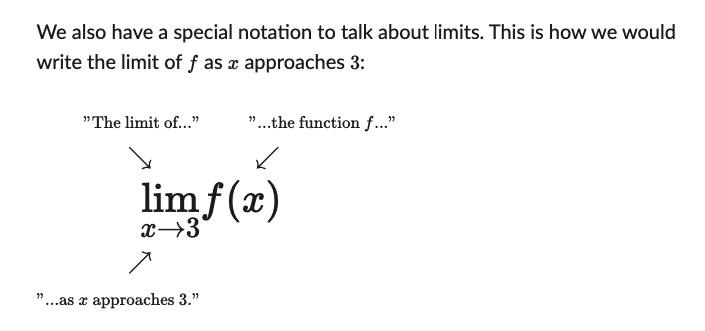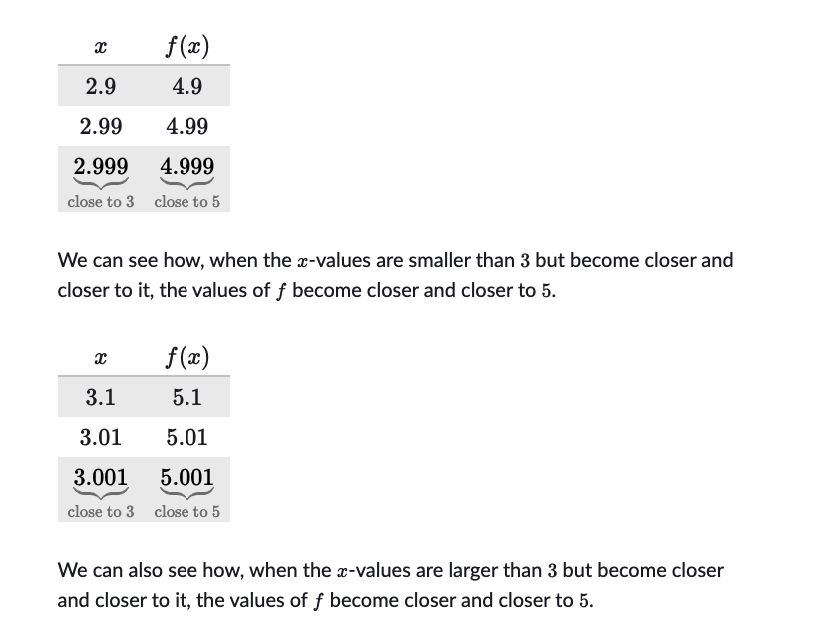What is limit?
Limit describes how a function behaves near a point instead of at that point. This is simple yet powerful idea that is the basis of all of calculus
To put this into simple words, limit defines what the function keeps getting closer and closer to
Eg:
f(x) = x + 2; What is the limit as value of x = 3?
the line approaches 5 both left and right when x = 3 the limit of f at x = 3 is 5
Notation
The limit of f at x = value is result

The symbol lim means we’re taking a limit of something
Infinitely close
f(x) = x + 2 as the x-values get very close to 3 (we do not care about f(3) itself)

In limits, we don’t want to get infinitely big, but infinitely close. When we say lim f(x) = 5 we mean we can always get closer and closer to 5 x -> 3
Limits on both sides
Looking at our previous example of f(x) = x + 2 we have to see how 5 is approached, if x values increase towards 3 this is called “approaching from the left” or if they decrease towards 3 this is called “approaching from the right”
When a limit doesn’t approach same values from both sides the limit does not exist (DNE)
eg: lim g(x) x -> 1
if g(1.0001) = 2.0001 if g(0.9999) = 4.9999
since the “left” and “right” side do not match the limit effectively does not exist (DNE)